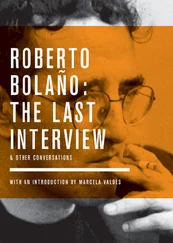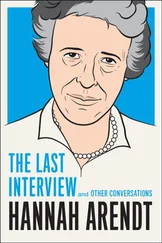Урсула Ле Гуин - Ursula K. Le Guin - The Last Interview and Other Conversations
Здесь есть возможность читать онлайн «Урсула Ле Гуин - Ursula K. Le Guin - The Last Interview and Other Conversations» весь текст электронной книги совершенно бесплатно (целиком полную версию без сокращений). В некоторых случаях можно слушать аудио, скачать через торрент в формате fb2 и присутствует краткое содержание. Город: London, Год выпуска: 2019, ISBN: 2019, Издательство: Melville House, Жанр: Биографии и Мемуары, Публицистика, sci_philology, на английском языке. Описание произведения, (предисловие) а так же отзывы посетителей доступны на портале библиотеки ЛибКат.
- Название:Ursula K. Le Guin: The Last Interview and Other Conversations
- Автор:
- Издательство:Melville House
- Жанр:
- Год:2019
- Город:London
- ISBN:978-1-61219-779-1
- Рейтинг книги:4 / 5. Голосов: 1
-
Избранное:Добавить в избранное
- Отзывы:
-
Ваша оценка:
- 80
- 1
- 2
- 3
- 4
- 5
Ursula K. Le Guin: The Last Interview and Other Conversations: краткое содержание, описание и аннотация
Предлагаем к чтению аннотацию, описание, краткое содержание или предисловие (зависит от того, что написал сам автор книги «Ursula K. Le Guin: The Last Interview and Other Conversations»). Если вы не нашли необходимую информацию о книге — напишите в комментариях, мы постараемся отыскать её.
Ursula K. Le Guin: The Last Interview and Other Conversations — читать онлайн бесплатно полную книгу (весь текст) целиком
Ниже представлен текст книги, разбитый по страницам. Система сохранения места последней прочитанной страницы, позволяет с удобством читать онлайн бесплатно книгу «Ursula K. Le Guin: The Last Interview and Other Conversations», без необходимости каждый раз заново искать на чём Вы остановились. Поставьте закладку, и сможете в любой момент перейти на страницу, на которой закончили чтение.
Интервал:
Закладка:
Beginning in the summer of 2015, I sat in that room with Le Guin five times. We were planning a sixth meeting when a final illness took her at the beginning of 2018. The format was always the same: we placed ourselves in armchairs, separated by the width of the fireplace. The insults of age meant she could only sit still for an hour, and I tried hard never to exceed that limit. I always brought with me copies of her books, for quoting or reference. The early ones had garish and sometimes beautiful pulp covers. Le Guin chuckled frequently—the world amused her—but did not spare me when she felt I misunderstood something.
Pard, the black-and-white cat whose antics Le Guin chronicled on her blog, would stalk imperiously through. Charles, the writer’s husband of six decades, was always home but never visible. “He’s very shy,” she explained. “He doesn’t like to engage with ‘my people,’ as he calls them. He has his own people.” In the evenings, she and Charles used these chairs to read to each other. Charles would read poetry first (once when I was there it was Theodore Roethke) and then Le Guin would do the prose (Richard Henry Dana’s sea-faring epic Two Years Before the Mast ). She would have a glass of mellow Speyside whisky. Charles, who hails from Georgia, would drink bourbon.
Extracts from our conversations appeared in The New York Times and the Los Angeles Review of Books. In advance of publication, she would sometimes revise a quote or expand it. Occasionally she softened a point about someone whom she scorned, like her fellow Library of America honoree, Philip Roth. In what follows, I went back to the original tapes to produce a definite record of our conversation, divided for the sake of clarity into two parts.
DAVID STREITFELD:I was perusing the bookcases here, and I didn’t see any of your books.
URSULA K. LE GUIN:They fill the shelves of two bedrooms upstairs, one copy of each edition. So many different editions. [ Laughs ] I’ve had two partial bibliographies done of my work, but the last one was years ago. I was required to list the number of titles recently. I was told it was forty-seven. And I said, I’ll bet there’s more than that. I went through the bibliography on my website, which is just the main titles, no chapbooks. There were sixty, more than I realized. I can’t keep up.
STREITFELD:I can’t either. I know your work well but I was reading the other night a piece I hadn’t read before, which I guess was performance art from the early 1990s. It was about being a woman who was really a man—because you were born before men acknowledged there were indeed such things as women. It was also about getting older and, among other things, Ernest Hemingway, he of “the beard and the guns and the wives and the little short sentences.” It is deliciously unhinged:
Hemingway would have died rather than get old. And he did. He shot himself. A short sentence. Anything rather than a long sentence, a life sentence. Death sentences are short and very, very manly. Life sentences aren’t. They go on and on, all full of syntax and qualifying clauses and confusing references and getting old. And that brings up the real proof of what a mess I have made of being a man: I am not even young. Just about the time they finally started inventing women, I started getting old. And I went right on doing it. Shamelessly.
I have allowed myself to get old and haven’t done one single thing about it, with a gun or anything. [1] “Introducing Myself.” Appearing in Left Bank , archived at https://www.scholarsonline.org/~godsflunky/LeGuin_Intr_myself.pdf .
LE GUIN:[ Laughs ] I was in a state when I wrote that. My early sixties, I guess. Now I’m even older. Much older. And I still don’t have a gun.
STREITFELD:How does getting old look now?
LE GUIN:It’s not the metaphysical weariness of aging that bothers me. It’s that you get so goddamn physically tired you can’t pull yourself together. If you’ve ever been very ill, it’s like that. You just can’t rise to the occasion. It’s why I don’t do many public appearances anymore. I’m a ham. I love appearing in front of an audience. But I can’t.
STREITFELD:Even as a younger writer, you captured the old. As I rapidly age myself, I keep returning to the story “The Day Before the Revolution.” The heroine, Odo, has trouble moving and has trouble thinking.
LE GUIN:Old age is when you realize you can’t do what you used to do. I know more about being older now and I feel compelled to write about it. Partly because there aren’t very many old people in fiction, and they are just as interesting as younger people. And also, I think a writer who is still writing in her mid-eighties, like José Saramago or me—even if I’m only writing poetry—has a certain duty to report from the front. We are bearing witness to a place most people haven’t been. You’re how old? FIfty-four, fifty-six? Believe me, you haven’t been there. You may think you’re getting old, but you have a ways to go.
STREITFELD:It’s a long slide downhill, it seems like.
LE GUIN:A long way to go doesn’t tell you up or down, does it? It’s just a long way to go. I’m neither an optimist nor a pessimist. I just tell it the way it is. [ Laughs ] Being an artist takes a certain amount of arrogance.
STREITFELD:With fiction writers, we expect them to go on forever. No one expects a surgeon to be operating on people when he’s ninety-three. But the readers always want more.
LE GUIN:There was considerable amazement that Saramago was still writing in his mid-eighties. I was very impressed, I have to say. He’s an unusual case, a very unusual writer. His last books were stronger than many younger writers’ novels. The Elephant’s Journey was a perfect work of art, and very funny.
STREITFELD:I see nothing in this room that smacks of our high-tech era.
LE GUIN:I have a website. I blog. I get email and send email. But I try and keep my distance. The internet just invites crap from people.
STREITFELD:You are the only writer I know who wrote a book about the street she lives on.
LE GUIN:It’s called Blue Moon Over Thurman Street. It has wonderful photographs by Roger Dorband. The street didn’t change for decades—it started at the docks, in industry, and moved through poverty and then small businesses to the working class and the middle class before petering out in hiking trails. It was a street that encapsulated America, or at least Portland. Thurman Street tied together the river with the hills, where the trees are.
STREITFELD:And then, suddenly, everything changed.
LE GUIN:Right after we wrote it in 1993 it was boom! The street went upscale. All the empty lots were filled in. They even changed the street down by the river to make it one-way, cutting off lower Thurman from upper Thurman. It reflected with incredible literalness the way America was no longer one place but two, one for the rich and the other for the poor. It was a split that didn’t seem to bother anyone. That also reflected America.
STREITFELD:When did you first move here?
LE GUIN:In 1959. It’s a mail-order house. Sears Roebuck sent the plans, and the local carpenter built it with local wood. The one next door is this house plus a whole other wing. This neighborhood was originally upper middle class, a development for business owners and such. By the time we got here it was very run down, lower middle class or upper working class. We were young. Charles was an assistant professor. We didn’t have much money and were starting a family. It was a beautiful big house on a hill. We just waltzed in here and said “Oh yeah.” You know what it cost us? $12,500. It’s about a half a million now.
Читать дальшеИнтервал:
Закладка:
Похожие книги на «Ursula K. Le Guin: The Last Interview and Other Conversations»
Представляем Вашему вниманию похожие книги на «Ursula K. Le Guin: The Last Interview and Other Conversations» списком для выбора. Мы отобрали схожую по названию и смыслу литературу в надежде предоставить читателям больше вариантов отыскать новые, интересные, ещё непрочитанные произведения.
Обсуждение, отзывы о книге «Ursula K. Le Guin: The Last Interview and Other Conversations» и просто собственные мнения читателей. Оставьте ваши комментарии, напишите, что Вы думаете о произведении, его смысле или главных героях. Укажите что конкретно понравилось, а что нет, и почему Вы так считаете.








